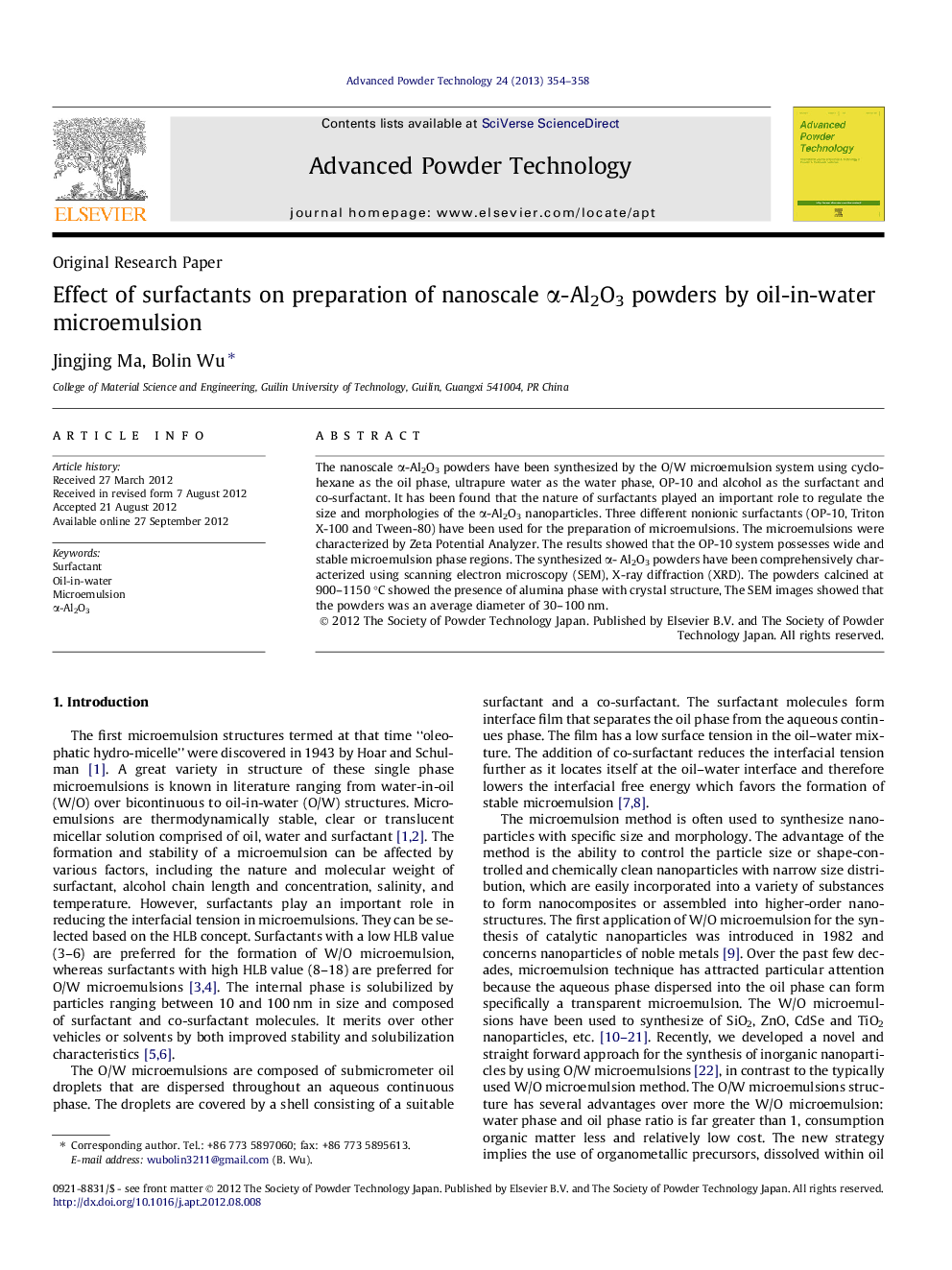| کد مقاله | کد نشریه | سال انتشار | مقاله انگلیسی | نسخه تمام متن |
|---|---|---|---|---|
| 144939 | 438954 | 2013 | 5 صفحه PDF | دانلود رایگان |

The nanoscale α-Al2O3 powders have been synthesized by the O/W microemulsion system using cyclohexane as the oil phase, ultrapure water as the water phase, OP-10 and alcohol as the surfactant and co-surfactant. It has been found that the nature of surfactants played an important role to regulate the size and morphologies of the α-Al2O3 nanoparticles. Three different nonionic surfactants (OP-10, Triton X-100 and Tween-80) have been used for the preparation of microemulsions. The microemulsions were characterized by Zeta Potential Analyzer. The results showed that the OP-10 system possesses wide and stable microemulsion phase regions. The synthesized α- Al2O3 powders have been comprehensively characterized using scanning electron microscopy (SEM), X-ray diffraction (XRD). The powders calcined at 900–1150 °C showed the presence of alumina phase with crystal structure, The SEM images showed that the powders was an average diameter of 30–100 nm.
In this work, a quarternary microemulsion (OP-10/ultrapure water/cyclohexane/ethanol) was selected. The two different solutions (O and W) were prepared as follows: The O (the mixed solution of cyclohexane and aluminium chloride crystal, OP-10 and ethanol) was used as oil phase. It was mixed by magnetically stirring until the mixture became transparent and the Al3+ ions were evenly dispersed in the oil phase solution. The W (ultrapure water, ethanol and OP-10) as water phase was mixed. Meanwhile, Fig. 2 shows the hydrophilic group (O) and the lipophilic group (W) were exposed under the action of the surfactant. The oil phase was poured into the water phase for emulsification, and obtained a uniform and stable aluminum salt microemulsion. Then, an appropriate amount of (1.0 mol L−1) ammonia solution was added dropwise into the microemulsions while they were stirred until pH = 8.5. The Al3+ ions and the OH- ions were attracted to each other directional movement and interaction. In order to ensure the uniform distribution of the alumina precursor obtained. The samples were performed at 60 °C in constant water bath for 30 min, and added 0.1% PEG6000 for ultrasonic dispersion at 30 °C for 40 min. Finally, the amorphous precursor gels were filtered, washed with ethanol for three times, dried at 80 °C and sintered at 1150 °C for 4 h. The filtrate was recovered by fractionation.Figure optionsDownload as PowerPoint slideHighlights
► The nanoscale α-Al2O3 powders have been prepared by O/W microemulsion method.
► The OP-10 system possesses wide and stable microemulsion phase regions.
► The XRD patterns for α-Al2O3 sintered at1150 °C.
► The α-Al2O3 particle was spherical in the shape, grain size was more even.
Journal: Advanced Powder Technology - Volume 24, Issue 1, January 2013, Pages 354–358